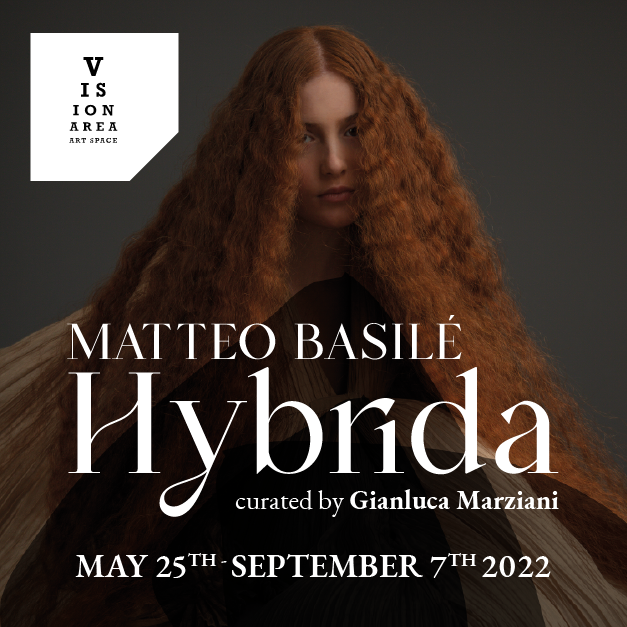Matteo Basilé con la mostra ?Hybrida? presso Visionarea Art Space
Language experimenter, one of the most sought-after innovators of Contemporary Art since the mid-1990s, and among the first in Europe to experiment with hybridization between art and the digital world: Matteo Basilé. In a national preview, from May 25th to September 6th at the Visionarea Art Space in Rome, the artist returns to play with the languages of all that is digital, creating actual basic matter for new artistic projects that investigate, interrogate, and experiment with very new frontiers, making material what is immaterial and giving life to new visions.
HYBRIDA is the title of the exhibition curated by Gianluca Marziani, which ends the 2021/2022 season for VISIONAREA Art Space. Until September 6th, a selection of works created in 2022, and never before exhibited in Rome, will be on display, along with a brand new NFT art project produced by the newly envisioned ARTITUDE.AI.
The exhibition is organized at the Auditorium della Conciliazione by VISIONAREA, with the support of Fondazione Cultura e Arte, an instrumental institution of the Fondazione Terzo Pilastro - Internazionale, which is chaired by Professor Emmanuele F. M. Emanuele. The venue confirms its vocation as a contemporary outpost in the heart of Rome, as it ends the new season with an exhibition that presents new hybrid experiments to the general public, created by one of the most interesting contemporary “creator of worlds” (as he was defined by Gianluca Marziani): Matteo Basilé.
If hybridism in ancient history was imagined between the animal world and the human world (from the Great Sphinx of Giza to the myth of Faunus), hybridism today is between humans, technology, and biology, whether these be subcutaneous chips or biological microorganisms like viruses.
Hybrida is articulated through photographic works of various sizes, which adapt their surfaces to the energetic directions of the individual subject, to the plane across which it develops, to the ability of evoking landscapes even when these are not present. Flat backgrounds with a Flemish matrix isolate the female figures of this anthropology of future contingents, as they impose centrality to the Rembrandt of their dramaturgy, as if they were indicating to us the margins of our errors and wasted opportunities. The three monitors that contain just as many portraits perform the same ritual, but with the semantic quality of High Definition, within digital grammar that enhances the infinitesimal perception of microscopic details.
When speaking of Matteo Basilé, the President of the Fondazione Terzo Pilastro, Professor Emmanuele F. M. Emanuele, commented: “Matteo Basilé was one of the first in Europe to merge art and technology, and it is no coincidence that his photographic works are tried and true digital paintings. In almost all of his creations, there is an explicit reference to the great masters of the past: from Caravaggio to Flemish art, and also influences of Baroque. Cultural baggage that the artist skillfully re-elaborates, merging classical history and the present time, in a gallery of subjects who constantly reconjure something known without, however, having a defined identity. ‘One, no one and one hundred thousand’, as they give life to a dreamlike and surreal world where spatial-temporal references no longer exist. Fluid and hybrid art, like the age in which we live.”
In the catalogue, Gianluca Marziani writes: “That is how creators of worlds are. They give new space and new time to their visionary perspective, stitching together reference sources with allusions to new liturgical sources. The creators of worlds imagine new humans within places that are mineralized by the very long time of the universe. This is the adult identity of a creator of worlds like Basilé. This is where the possibility of a STORY recommences.”
2022051774925755
2022051782006935
2022051880711716
2022052451664212
2022052481651626

